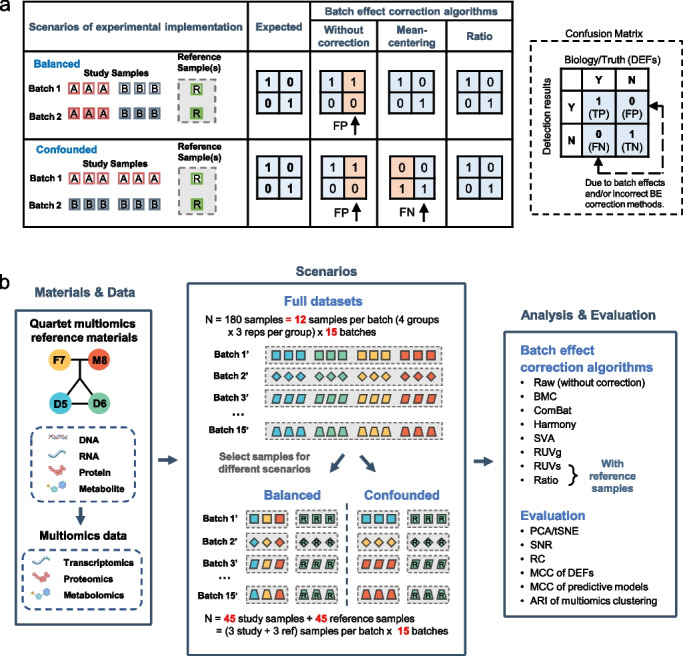Fig. 1.

Overview of the study design. a Advantages and limitations of batch-effect correction algorithms (BECAs) under balanced and confounded experimental scenarios. False positives and false negatives in cross-batch comparisons using different BECAs. b Overview of datasets and analysis approaches. Multi-batch datasets from transcriptomics, proteomics, and metabolomics were generated using the Quartet multiomics reference materials derived from a Quartet family including father (F7), mother (M8), and monozygotic twin daughters (D5 and D6). Subsets of data were selected from the full datasets to create balanced and confounded scenarios for assessing the pros and cons of BECAs. The multiomics profiling data were analyzed with seven BECA methods. Performances were then evaluated using visualization tools and quantitative metrics
